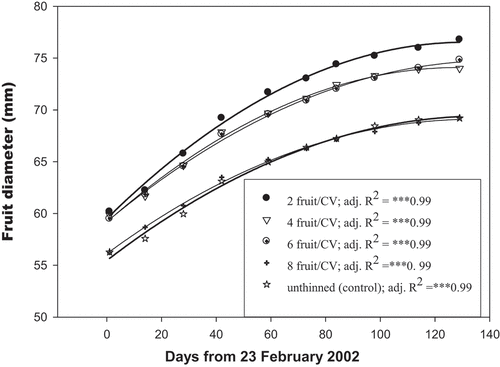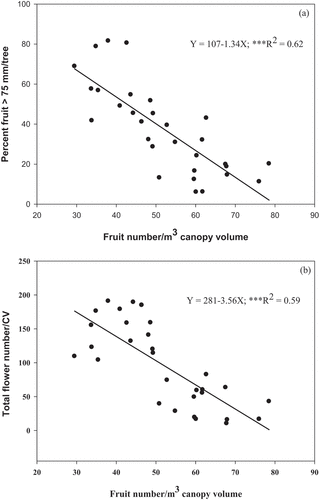Figures & data
Table 1. Total fruit removed, canopy volume and trunk circumference measured per tree at the time of thinning in “Washington Navel” orange in 2012.
Figure 1. Fruit growth patterns in “Washington Navel” trees for different thinning treatments 2, 4, 6 or 8 fruit/0.125 m3 canopy volume (CV) or non-thinned (control) during the 2012 cropping season.

Table 2. Parameters of the quadratic curve fitted to the fruit diameter data recorded 23 February–1 July 2012 for thinned and non-thinned “Washington Navel” orange trees.
Figure 2. The relationship of (a) fruit number/m3 canopy volume (CV) vs. percent fruit >75 mm/tree produced after thinning; and (b) fruit number/tree vs. total flower number/0.125 m3 CV the year after thinning.

Table 3. Fruit number (>75 mm)/tree, yield/tree and fruit number/tree for thinned and non-thinned “Washington Navel” trees for 2012 and 2013 seasons.
Table 4. Effect of hand thinning on per carton returns and net returns per hectare of “Washington navel” orange in thinned and non-thinned trees in 2012.
Table 5. Effects of hand thinning on return flowering/0.125 m3 canopy volume for “Washington Navel” orange in 2012–13 season.
